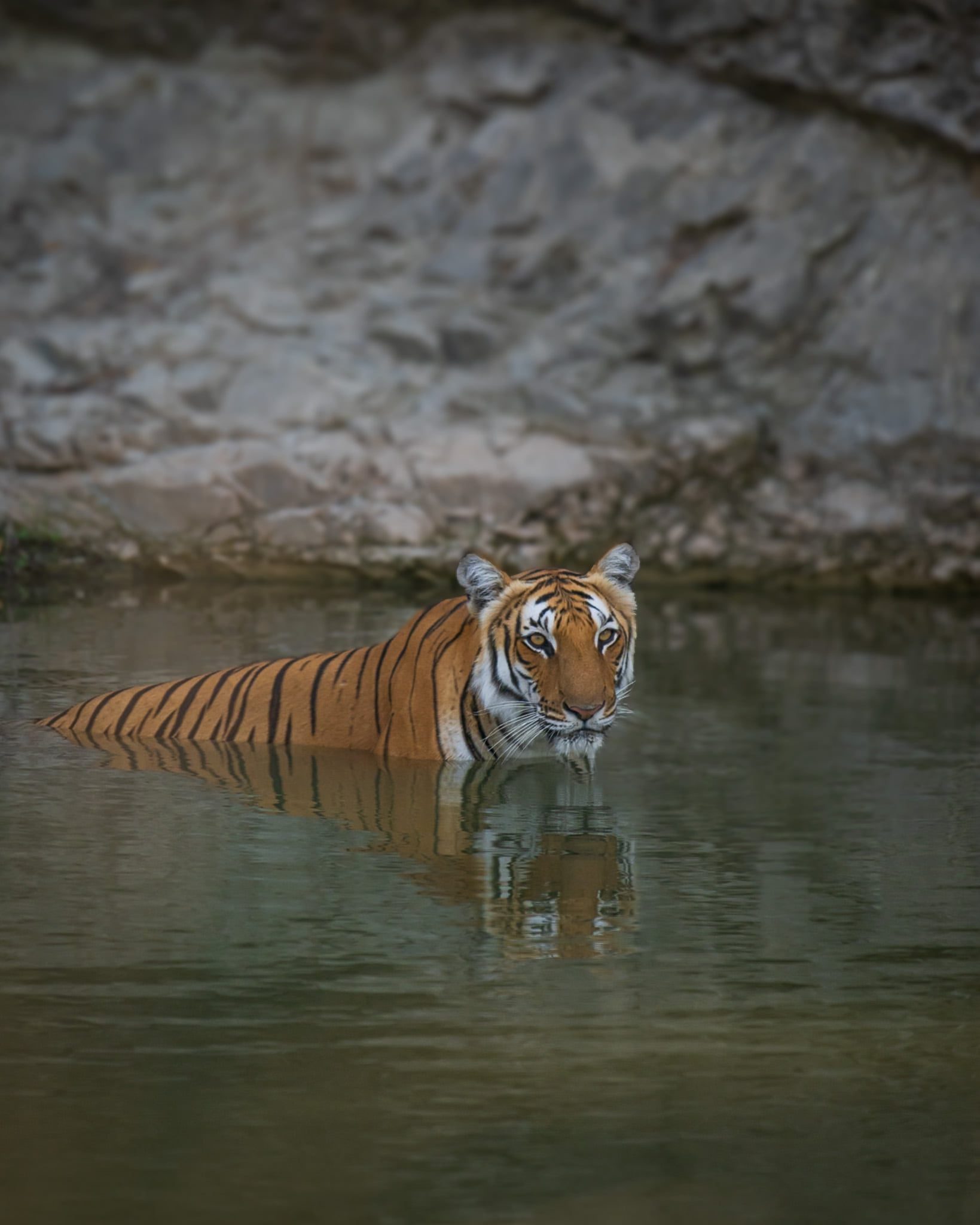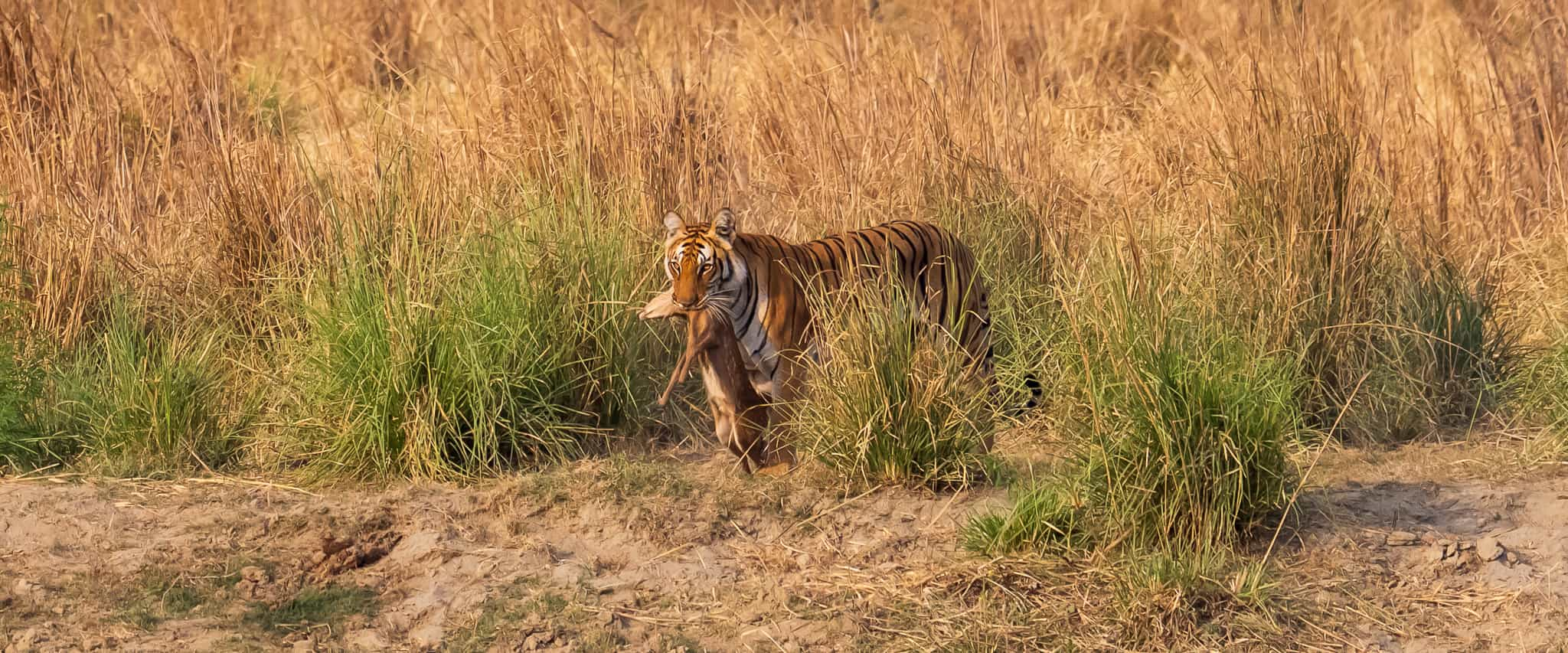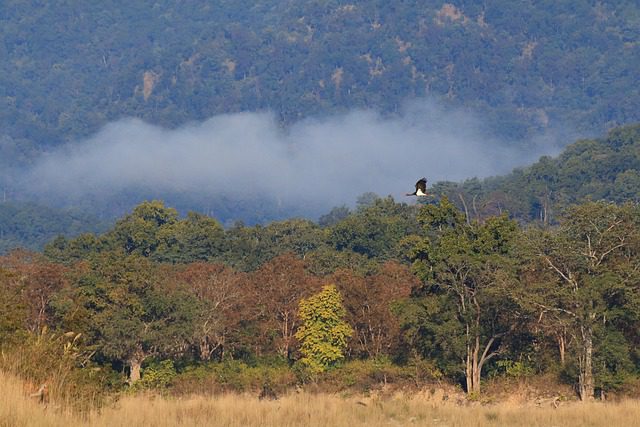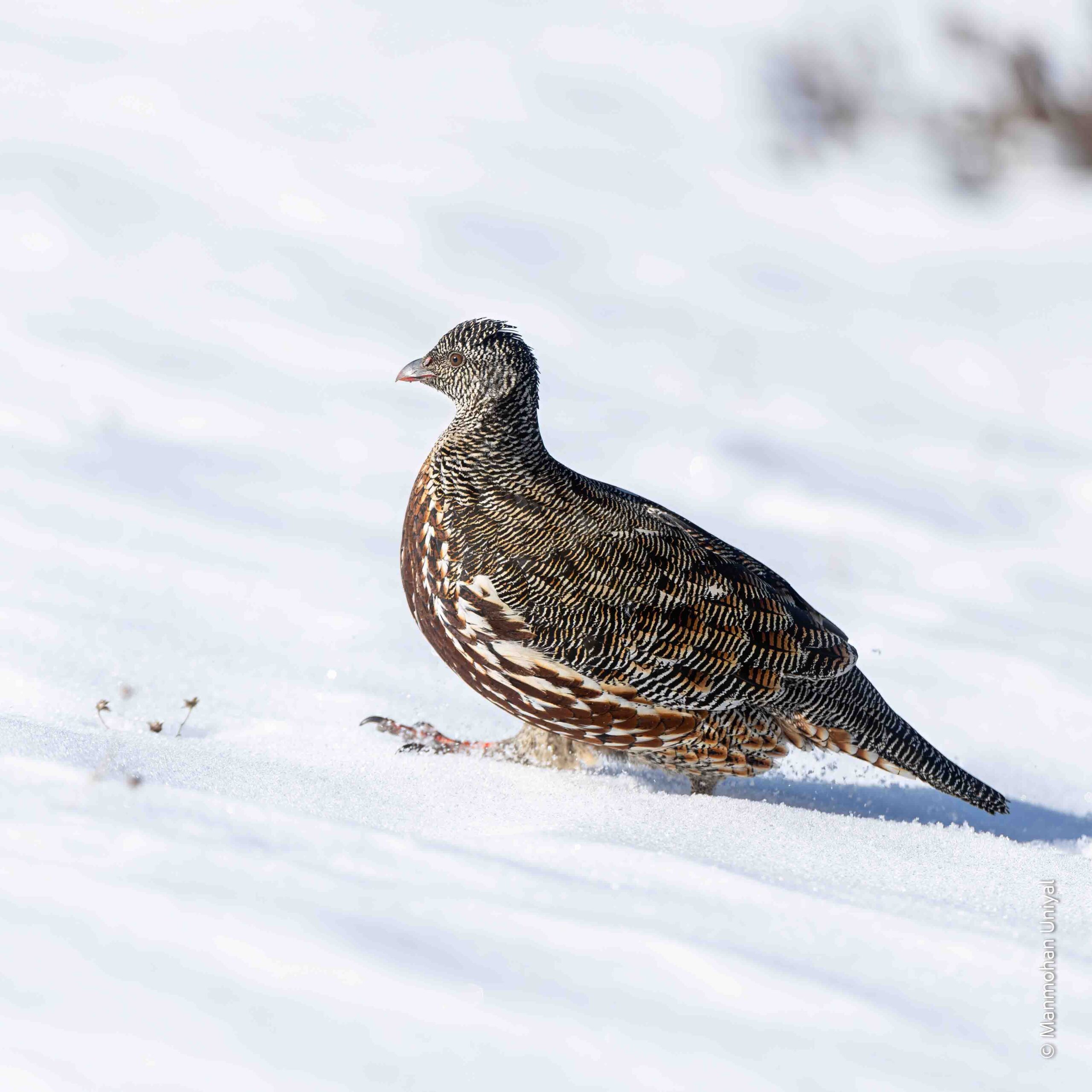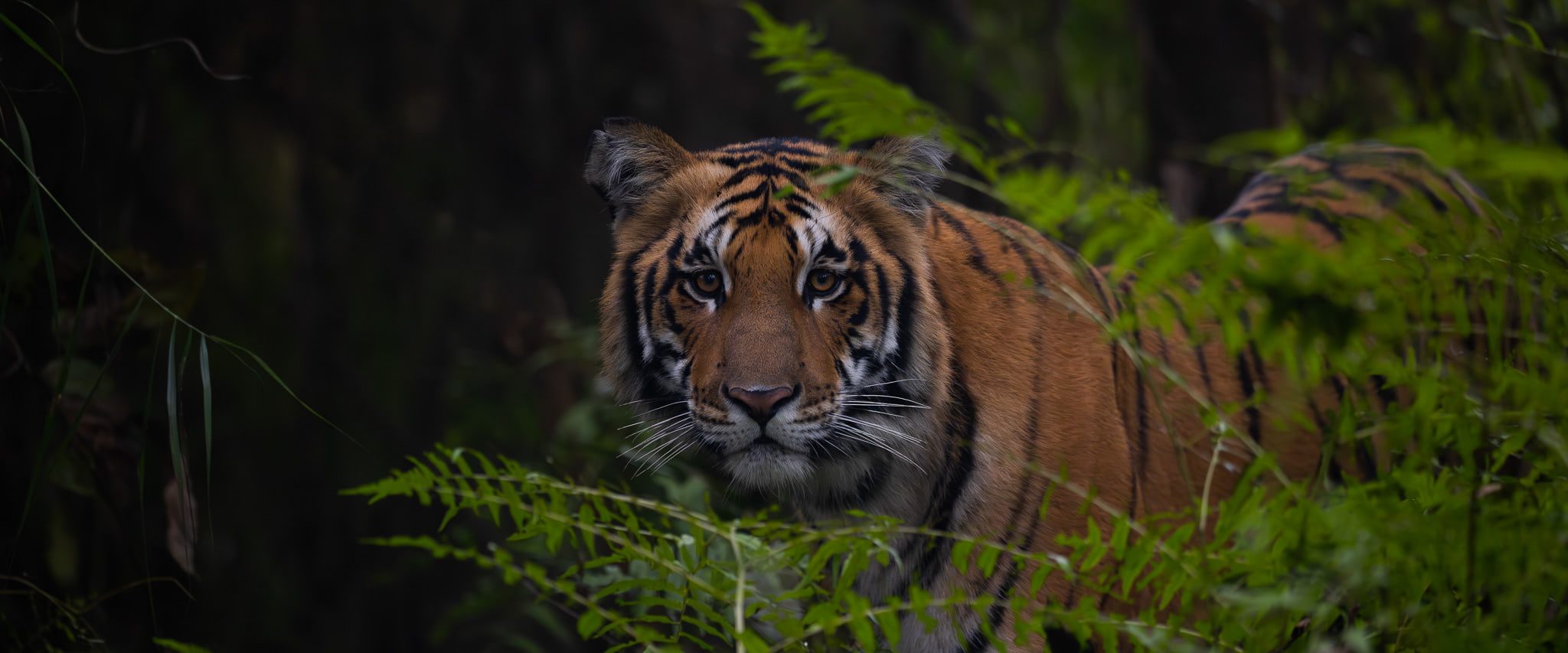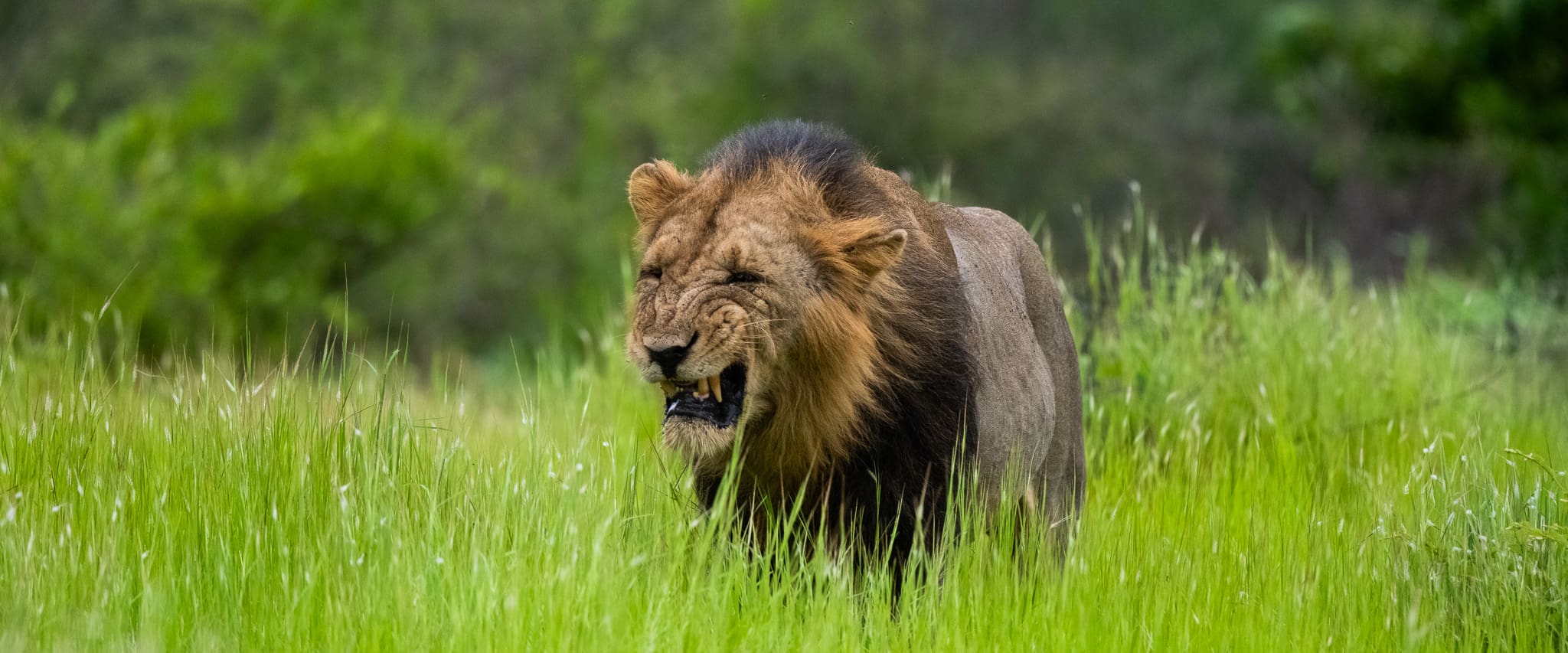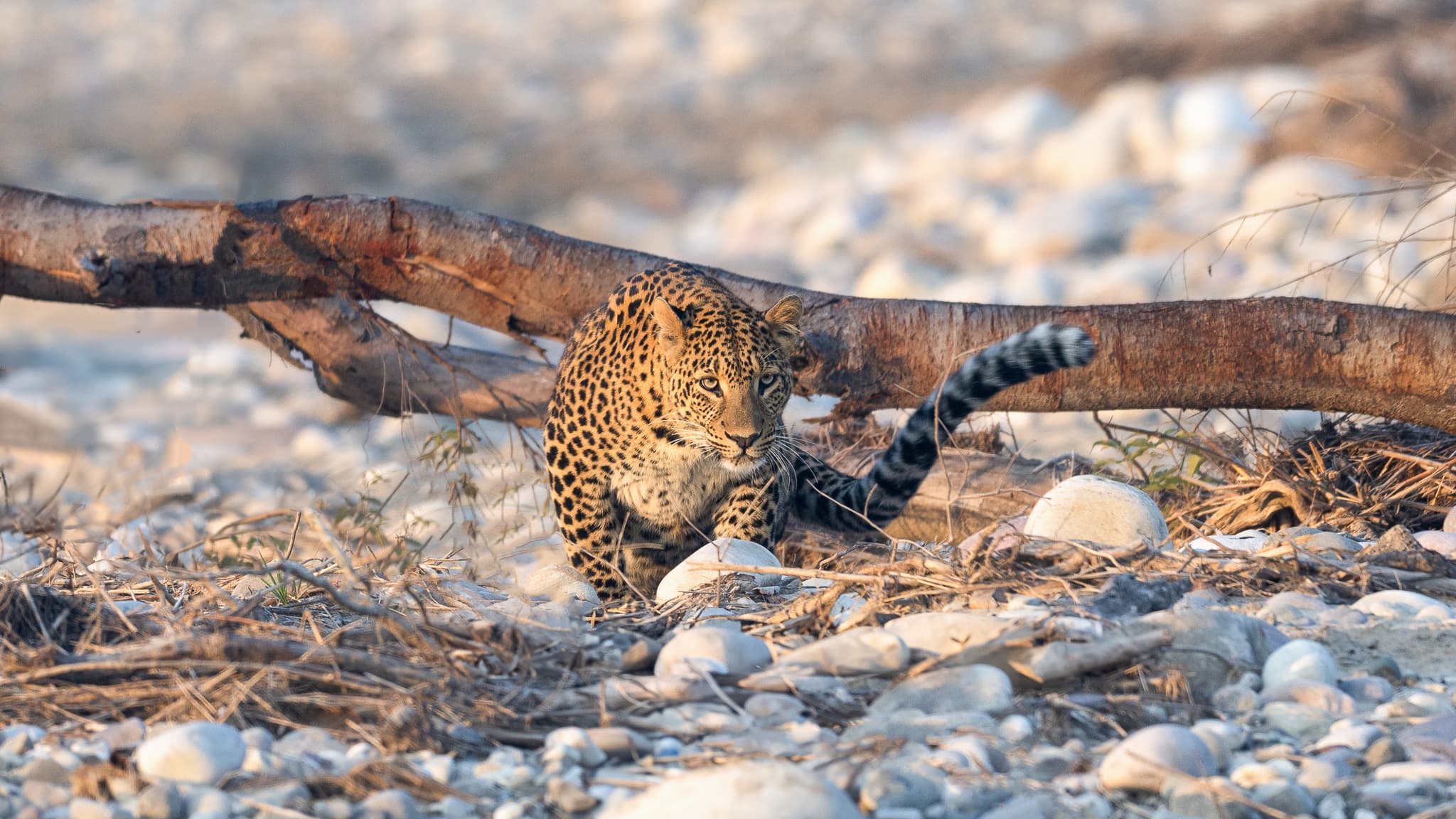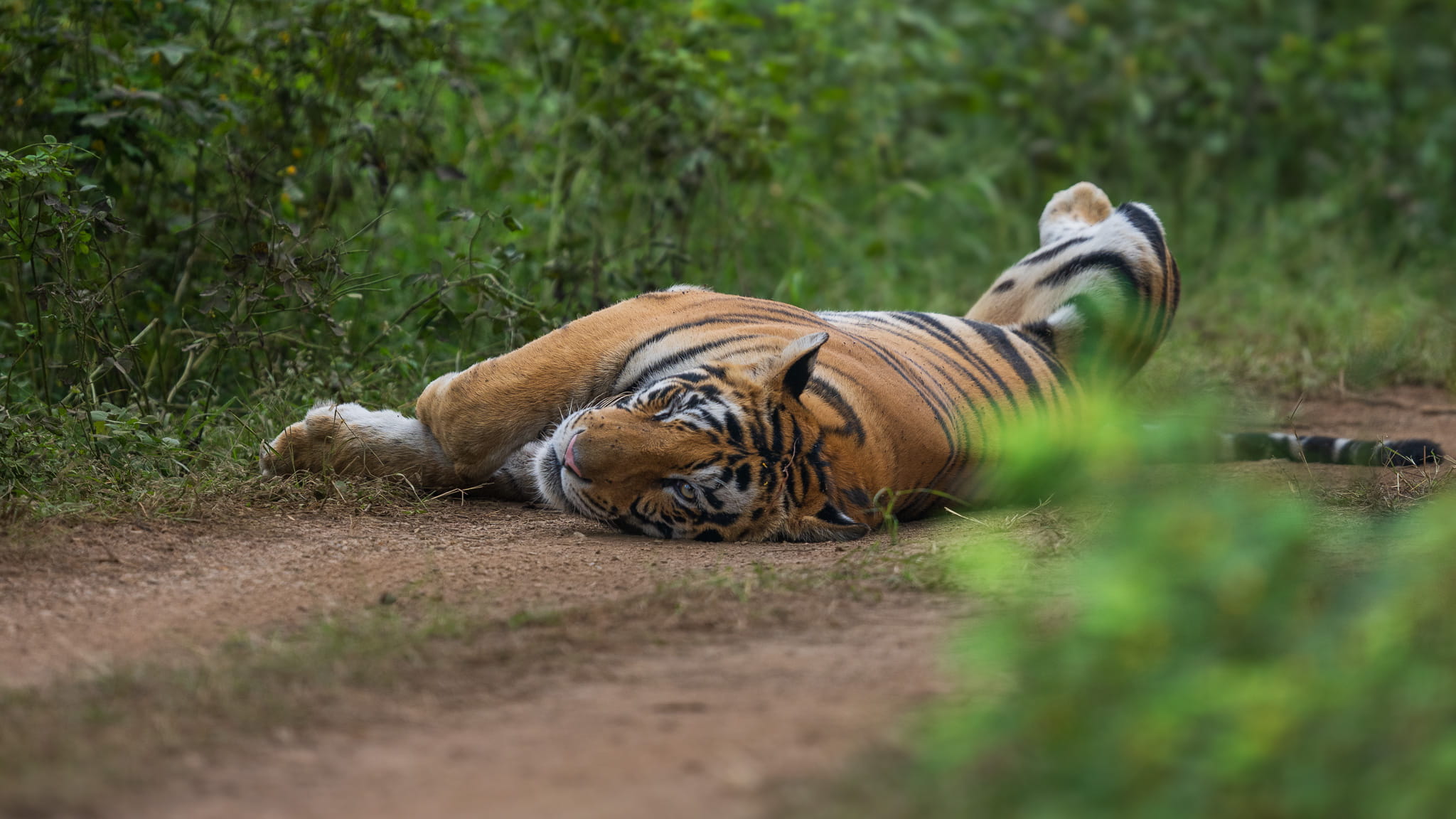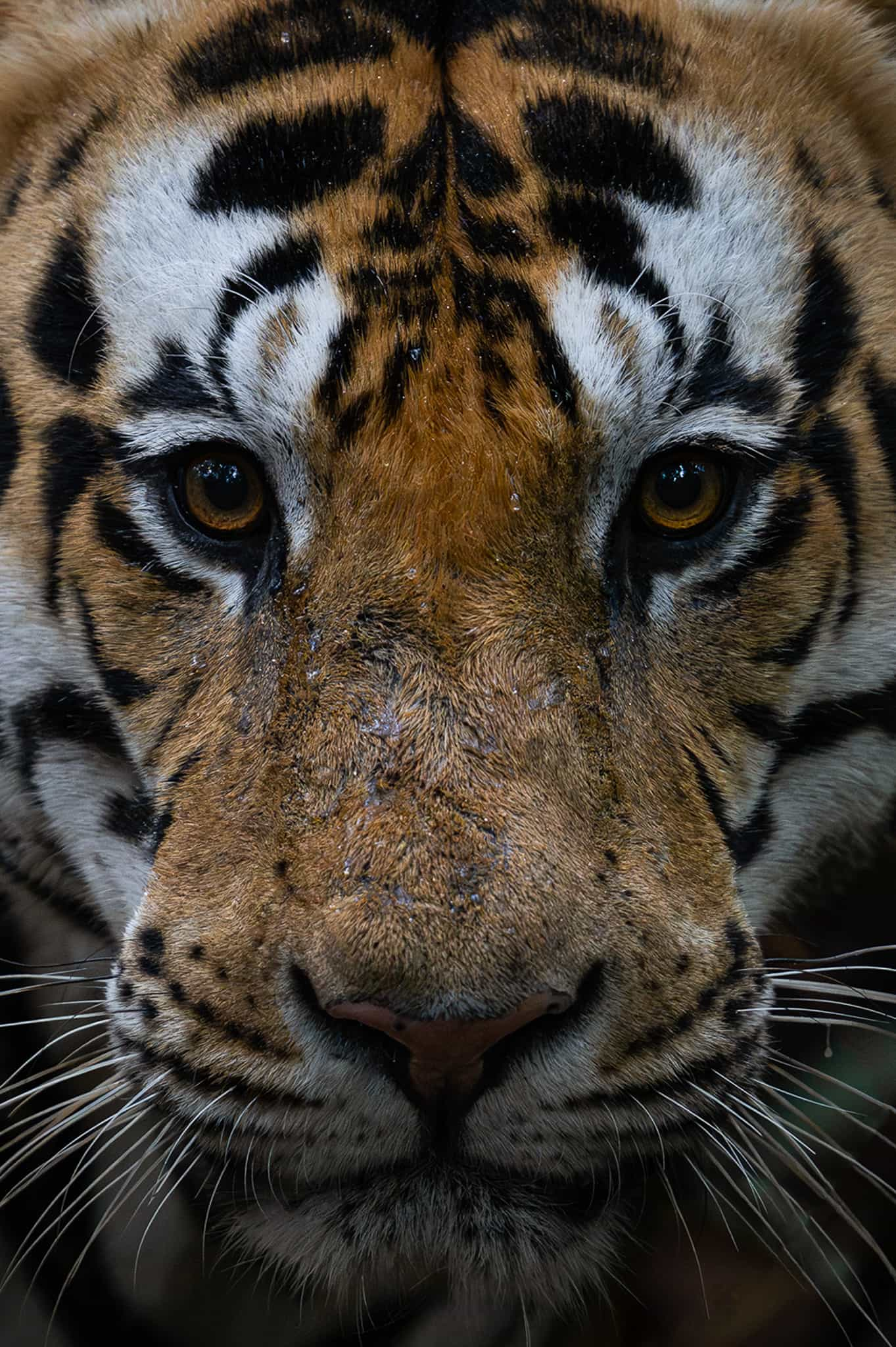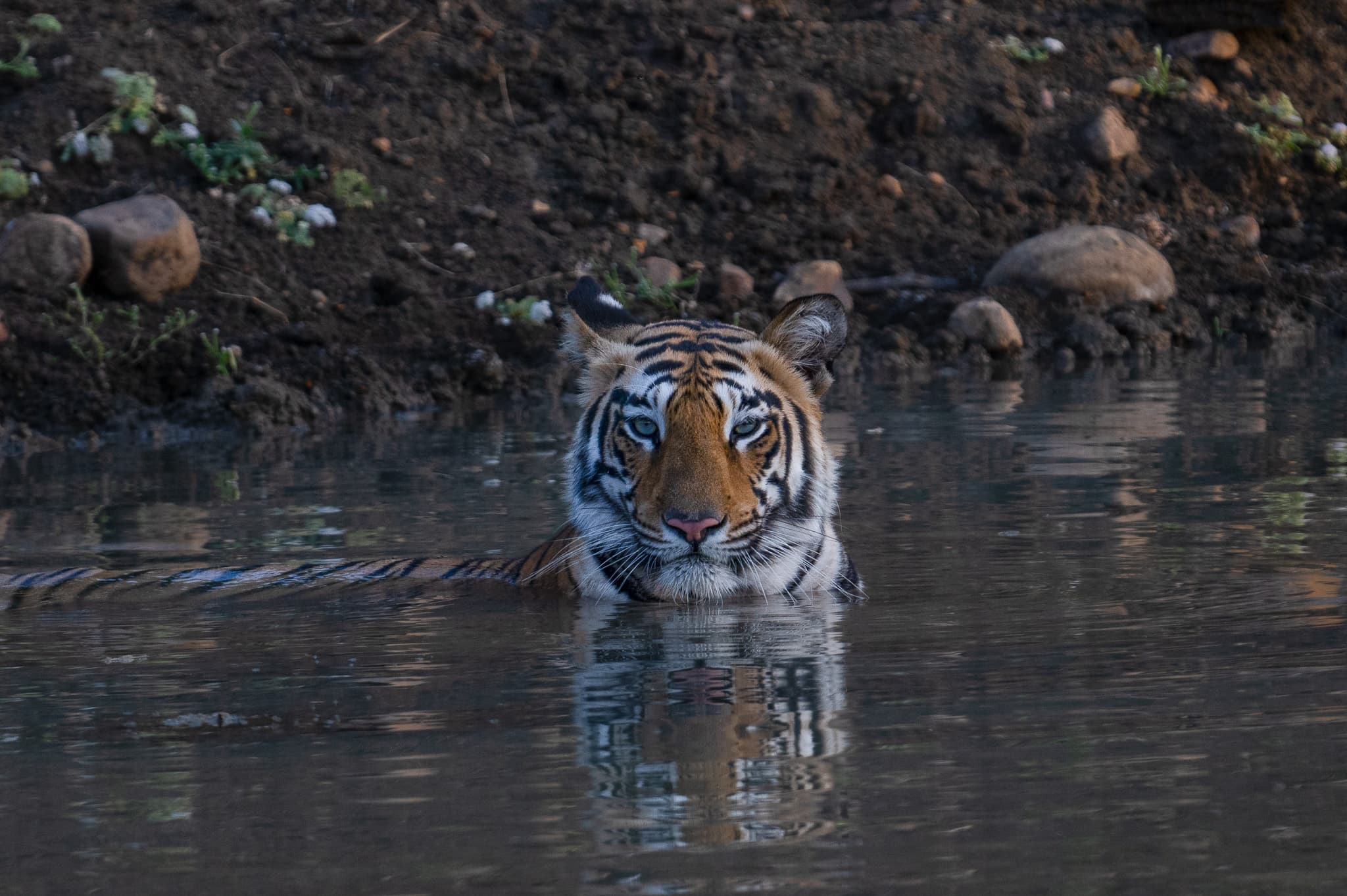Jim Corbett Tiger Reserve
Visit Jim Corbett Tiger Reserve With WOW
Corbett Express (2N 3D)

Corbett Tiger Trails (2N 3D)
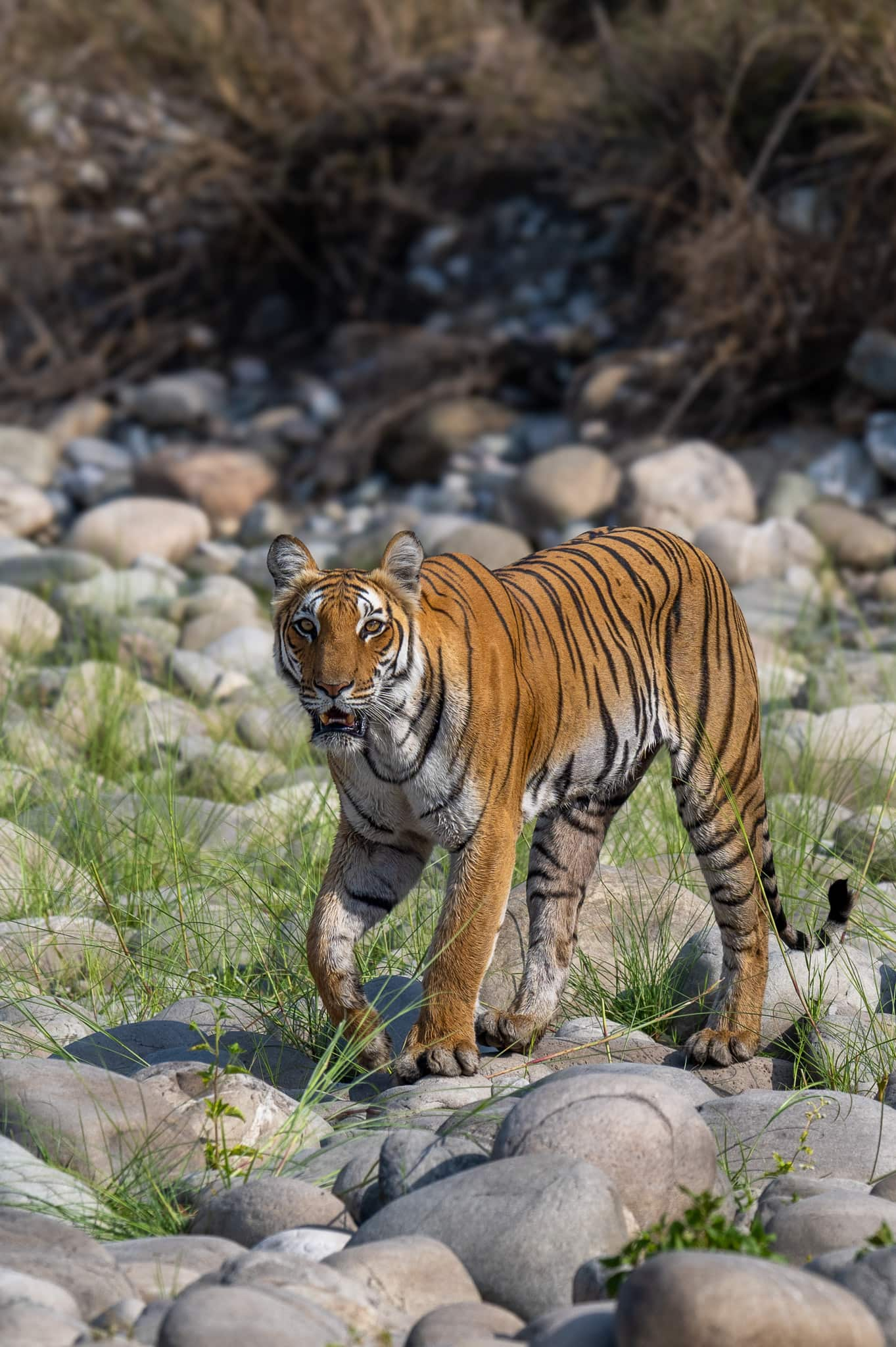
Corbett Tiger Trails (3N 4D)
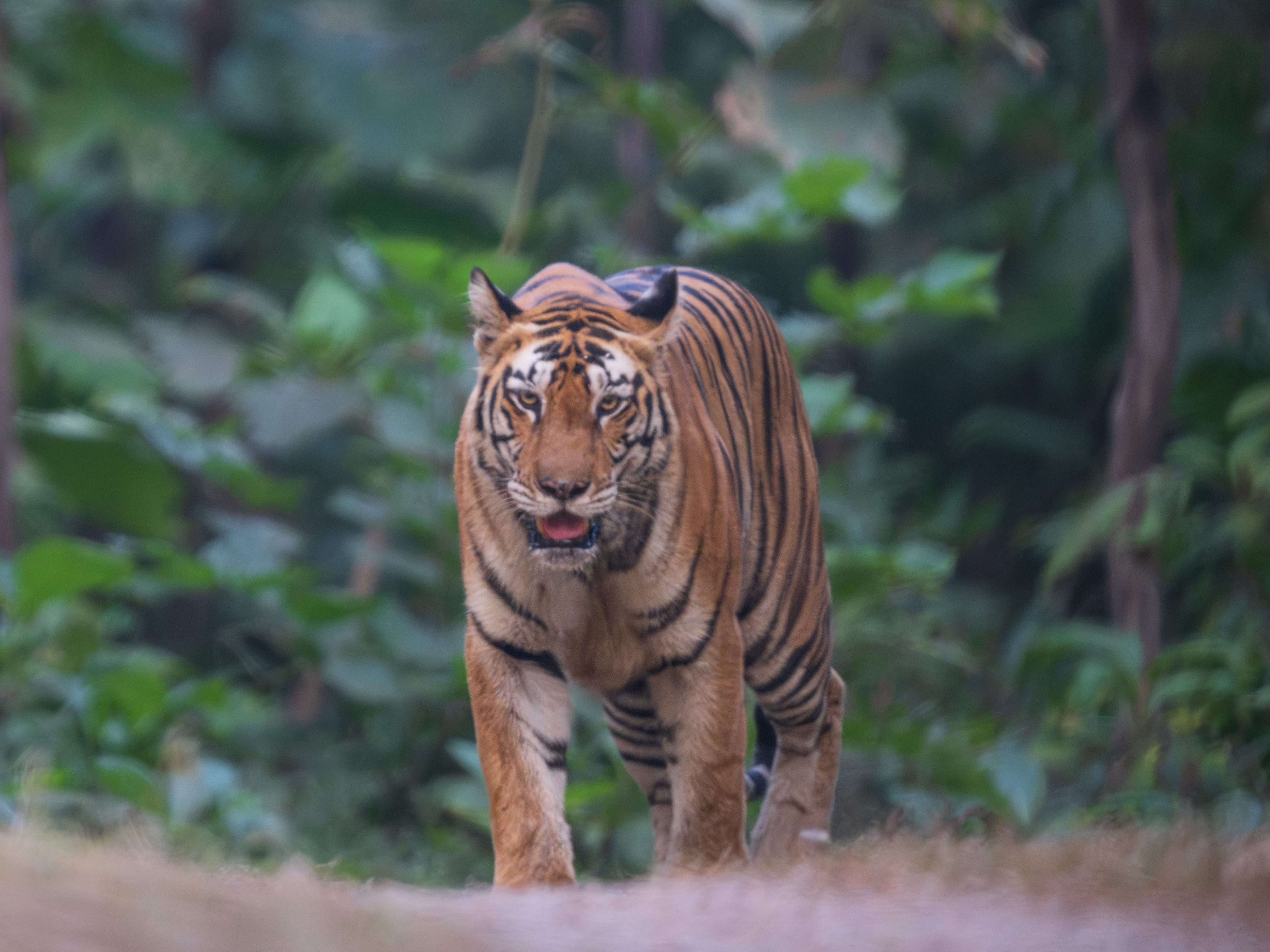
Corbett Discovery (4N 5D)

Tour Details
Corbett Express (2N 3D)
Group Size: 4 participants per jeep
Safaris: 4 Jungle Safaris across 2 Zones (best zones based on availability)
Package Inclusions
1. Pick-up and drop from Ramnagar
2. Accommodation in comfortable hotel/resort
3. All meals (from Day 1 lunch to Day 3 breakfast)
4. Tea & snacks
5. Safari permits, guide fee, safari vehicles, and camera charges (if any)
Package Exclusions
1. Travel beyond the designated pick-up/drop point
2. Alcoholic beverages
3. Expenses of personal nature
4. Anything not specifically mentioned in the inclusions
🗓️ Itinerary
Day 1 – Arrival & Evening Safari
Arrive at Ramnagar and transfer to your hotel or resort near the reserve. After check-in and lunch, you’ll head out for your first evening safari. This initial drive sets the stage for your wildlife experience — guests often encounter spotted deer, wild boars, and a variety of forest birds. Your naturalist will guide you through the landscape, helping you read signs of animal movement and spot early bird activity.
(Meals: Lunch, Dinner)
Day 2 – Morning & Evening Safaris
Begin the day with a morning safari in one of Corbett’s active zones. Mornings are often rich in sightings — from elephants at watering spots to calls of parakeets, green bee-eaters, and the rustle of langurs high in the canopy. Your naturalist will interpret sounds, tracks, and behavior, offering context to what you see and hear.
After lunch and a short rest, return for an evening safari in a second zone. These drives commonly include views of sambar deer, owlets, and smaller forest mammals active at dusk.
(Meals: Breakfast, Lunch, Dinner)
Day 3 – Morning Safari & Departure
Your final morning safari offers a peaceful close to your jungle journey. Bird activity is high at first light — guests often enjoy sightings of hornbills, peafowl, drongos, and barbets. After the safari, return for breakfast and check out for your onward journey from Ramnagar.
(Meals: Breakfast)
Corbett Tiger Trails (2N 3D)
Into the Wild at India’s Oldest National Park
Group Size 4 participants per jeep
Safaris 4 Jungle Safaris across 2 Zones (best zones, based on availability)
Package Inclusions
1. Pick-up and drop from Ramnagar
2. Accommodation in comfortable hotel/resort
3. All meals (from Day 1 lunch to Day 3 breakfast)
4. Tea & snacks
5. Safari permits, guide fee, safari vehicles, and camera charges (if any)
Package Exclusions
1. Travel beyond the designated pick-up/drop point
2. Alcoholic beverages
3. Expenses of personal nature
4. Anything not specifically mentioned in the inclusions
🗓️ Itinerary
Day 1 – Arrival & Evening Safari
Pickup from Ramnagar and transfer to your hotel/resort. After check-in and lunch, set out for your first jungle safari in one of the core zones.
(Meals: Lunch, Dinner)
Day 2 – Morning & Evening Safaris
Two safaris today — one in the early morning and one in the evening — each in a different zone to maximize chances of diverse wildlife sightings.
(Meals: Breakfast, Lunch, Dinner)
Day 3 – Morning Safari & Departure
Final morning safari, followed by breakfast and drop back at Ramnagar.
(Meals: Breakfast)
Corbett Tiger Trails (3N 4D)
Group Size: 4 participants per jeep
Safaris: 6 Jungle Safaris across 3 Zones (best zones selected based on availability)
Package Inclusions
1. Pick-up and drop from Ramnagar
2. Accommodation in comfortable hotel/resort
3. All meals (from Day 1 lunch to Day 4 breakfast)
4. Tea & snacks
5. Safari permits, guide fee, safari vehicles, and camera charges (if any)
Package Exclusions
1. Travel beyond the designated pick-up/drop point
2. Alcoholic beverages
3. Expenses of personal nature
4. Anything not specifically mentioned in the inclusions
🗓️ Itinerary
Day 1 – Arrival & Evening Safari
Arrive at Ramnagar and transfer to your wildlife hotel/resort near Jim Corbett. After check-in and lunch, set off for your first evening safari in one of the park’s active zones. This introductory drive offers a glimpse into Corbett’s diverse terrain and wildlife, often including spotted deer, peafowl, and early signs of predator movement. Your naturalist will help you interpret tracks, calls, and patterns to better understand what’s happening in the jungle.
(Meals: Lunch, Dinner)
Day 2 – Morning & Evening Safaris
Head out for a morning safari in a different zone selected for its current wildlife activity and accessibility. Guests frequently report sightings of elephants, green bee-eaters, and langurs during early drives.
In the evening, explore another area with your naturalist, who’ll help you identify owlets, jackals, and possibly trace the path of a big cat using signs like alarm calls or pugmarks.
(Meals: Breakfast, Lunch, Dinner)
Day 3 – Morning & Evening Safaris
Your third day brings a deeper experience of Corbett’s ecosystem. Whether driving through Sal forests or along riverbeds, your guide will highlight species such as the racket-tailed drongo, hornbills, niltavas, and possibly mugger crocodilesbasking on the banks.
As always, zone selection will be based on seasonal wildlife movement and permit availability to make the most of your time here.
(Meals: Breakfast, Lunch, Dinner)
Day 4 – Morning Safari & Departure
Enjoy your final morning safari as the forest wakes up — a time when many guests have enjoyed peaceful moments with barbets, bee-eaters, and deer herds moving through misty clearings. After breakfast, check out and depart from Ramnagar with a camera full of sightings and stories to tell.
(Meals: Breakfast)
Corbett Discovery (4N 5D)
Group Size: 4 participants per jeep
Safaris: 8 Jungle Safaris across 3 Zones (best zones, based on availability)
Package Inclusions
1. Pick-up and drop from Ramnagar
2. Accommodation in comfortable hotel/resort
3. All meals (from Day 1 lunch to Day 5 breakfast)
4. Tea & snacks
5. Safari permits, guide fee, safari vehicles, and camera charges (if any)
Package Exclusions
1. Travel beyond the designated pick-up/drop point
2. Alcoholic beverages
3. Expenses of personal nature
4. Anything not specifically mentioned in the inclusions
🗓️ Itinerary
Day 1 – Arrival & Evening Safari
Pickup from Ramnagar and transfer to your hotel/resort near Jim Corbett Tiger Reserve. After check-in and lunch, begin your first evening safari. This initial drive offers a chance to ease into the forest environment — with likely sightings of spotted deer, wild boars, and a variety of birds. Your accompanying naturalist helps interpret early signs — from identifying alarm calls to pointing out birding hotspots, setting the tone for the days ahead.
(Meals: Lunch, Dinner)
Day 2 – Morning & Evening Safaris
The day begins with a morning safari in one of Corbett’s core zones, such as Bijrani or Dhikala. Mornings are active, and many guests have seen elephants at waterholes, heard the trills of parakeets and green bee-eaters, and noticed the subtle signs of predator movement. Naturalists play a key role here — helping you understand the language of the forest, from fresh pugmarks to the direction of langur calls.
Later, return for an evening safari in a new zone, often adding sightings of sambar deer, owlets, and perhaps a shy jackal emerging from the underbrush.
(Meals: Breakfast, Lunch, Dinner)
Day 3 – Morning & Evening Safaris
Today’s safaris take you through a different habitat — a mix of riverine belts and grasslands that support a wide range of species. Naturalists will help spot and identify forest birds like hornbills, racket-tailed drongos, niltavas, and explain the unique ecological balance of each zone. Guests often enjoy the contrast between the morning light and the changing forest rhythms in the evening drive.
(Meals: Breakfast, Lunch, Dinner)
Day 4 – Morning & Evening Safaris
With another full day of safaris, you’ll dive deeper into Corbett’s varied landscapes — possibly exploring a third zone. From basking crocodiles by the river to civet tracks on dusty paths, the jungle reveals more with each drive. Your naturalist will continue to share insight — from behavioral patterns of elephants to reading the subtle cues that often precede a tiger’s presence.
(Meals: Breakfast, Lunch, Dinner)
Day 5 – Morning Safari & Departure
Your final morning safari offers a quiet, reflective end to your time in the forest. Bird activity tends to peak at dawn, and guests often spot barbets, bee-eaters, and peafowl. After breakfast, check out and return to Ramnagar — taking with you not just photos, but a deeper understanding of the jungle’s rhythm.
(Meals: Breakfast)
India’s Oldest National Park
Jim Corbett Tiger Reserve is India’s first national park and a living legacy of conservation. Located in Uttarakhand at the Himalayan foothills, Corbett offers an incredible mix of dense sal forests, grasslands, riverbanks, and hill terrain— making it one of the most scenic and wildlife-rich parks in the country.
India’s First National Park (Established in 1936)
Excellent Tiger, Elephant & Bird Sightings
Diverse Landscapes – Forests, Grasslands & Riverbeds
Best Time to Visit: October to June
Trusted by Travellers
I am highly impressed with the work of WoW, it’s a great initiative for budding Wildlifer like me.

Kamal Das Team
It’s very important to be part of the wildlife community for mutual learning, WoW is a very good platform to meet like minded wildlife photographers.

Nishant Mahra Team
Our Rajaji Tiger Reserve safari with Wow Safari India was an unforgettable experience, expertly mentored by Mr. Manmohan Uniyal. The highlight was spotting two magnificent leopards, Heera and Panna, in their natural habitat. With breathtaking landscapes, rich wildlife, and expert insights, it was truly an adventure of a lifetime!

Preeti Singh Team
As a beginner wildlife traveller, I went through whole cycle of trying different things, but with WoW, one can learn a lot in no time. There dedication for wildlife conservation is really amazing.

Sidharth Sharma Team
Plan Your Tour
Most Preferred Tours of Corbett
Frequently Asked Questions
Why Jim Corbett Should Be on Your Must-Visit List
Jim Corbett isn’t just a national park — it’s where India’s conservation story began. As the oldest national park in Indiaand the birthplace of Project Tiger, it holds deep historical and ecological significance.
But beyond its legacy, here’s why it’s a must-visit for any nature lover:
Incredible Diversity in a Single Park: From thick Sal forests to open grasslands and riverine ecosystems, Corbett offers a dramatic shift in terrain between zones — giving you a rich, varied jungle experience in one trip.
Wildlife Sightings Are Authentic and Rewarding: While tiger sightings are always a possibility, it’s the complete ecosystem — elephants, deer herds, crocodiles, and a wide range of birds — that makes every safari meaningful.
Birding Haven: With over 600 recorded bird species, including rare residents and winter migrants, Corbett is one of North India’s premier birding destinations.
Accessible Yet Wild: Just a few hours from Delhi, Corbett offers true wilderness without the need for long travel — perfect for long weekends, short escapes, or pairing with other Uttarakhand experiences like Nainital or Pangot.
Guided by Knowledge: With every tour, you’re accompanied by experienced naturalists who help you interpret the forest — making it not just a trip, but an education in the wild.
Whether you’re a first-time wildlife traveler or a returning naturalist, Corbett offers something timeless — raw nature, deep silence, and the thrill of the unknown around every corner.
What kind of forest is Jim Corbett?
Jim Corbett features a mix of dense Sal forests, open grasslands (chaurs), riverine belts, and hilly terrain. This varied landscape creates rich microhabitats, making it one of the most ecologically diverse tiger reserves in India. The terrain ranges from flat plains in zones like Jhirna and Bijrani to undulating riverbanks and cliffs in Dhikala and Dhela. The Ramganga River flows through the heart of the reserve, attracting large herds of elephants and other wildlife throughout the year.
What kind of biodiversity can I expect?
Corbett is home to a wide range of mammals, reptiles, birds, and plant species. The reserve hosts:
Over 50 mammal species including Royal Bengal Tigers, Asian elephants, leopards, sloth bears, gharial, jackals, and wild boars
600+ bird species, from forest birds like hornbills, woodpeckers, and niltavas to water birds like cormorants, kingfishers, and herons
Reptiles like mugger crocodiles, Indian rock pythons, and various lizards
And flora including Sal, Rohini, Haldu, and Ber trees, along with grass species and dense undergrowth.
Is tiger sighting common in Corbett?
Jim Corbett Tiger Reserve has one of the highest tiger densities in India, and sightings are possible — especially in zones like Dhikala and Bijrani. However, it’s important to remember that Corbett’s terrain is dense and natural — unlike parks with more open landscapes like Bandhavgarh or Tadoba.
That means:
Tiger sightings in Corbett are frequent, but not guaranteed.
Guests often rely on alarm calls, pugmarks, and expert tracking to improve their chances.
The experience is incredibly authentic — seeing a tiger in Corbett feels truly earned.
Most travelers return with memorable sightings of elephants, deer herds, crocodiles, and a rich variety of birds, with many lucky enough to spot the big cat too — often with the help of skilled guides and naturalists.
In short: Yes, tiger sightings do happen often — but they are part of a larger, thrilling forest experience.
What are the expected wildlife sightings in Corbett?
Wildlife sightings vary based on zone, season, and time of day, but many guests commonly see:
Spotted deer, sambar deer, langurs, wild boars, and occasionally jackals and civets
Asian elephants, especially near water bodies and during the summer months
Birds such as racket-tailed drongo, green bee-eater, owlets, hornbills, parakeets, barbets, and peafowl
Tiger sightings, while not guaranteed, are fairly regular in zones like Dhikala and Bijrani — naturalists help track alarm calls and signs for the best chance.
How many days are ideal for a Corbett trip?
A 2-night, 3-day tour gives you a good overview with 3–4 safaris. For deeper immersion into multiple zones and better sighting chances, 3–5 nights are recommended. Dhikala, being inside the core zone, is best experienced over 3+ nights.
Is Corbett good for birdwatching?
Absolutely. With over 600 species, Jim Corbett is a birdwatcher’s paradise. Guests often spot crested serpent eagles, great hornbills, lineated barbets, woodpeckers, bee-eaters, drongos, and migratory water birds depending on the season. Winter (Nov–Feb) is especially rich for bird diversity.
Highlights of WOW Safari
Moments Captured in Corbett


